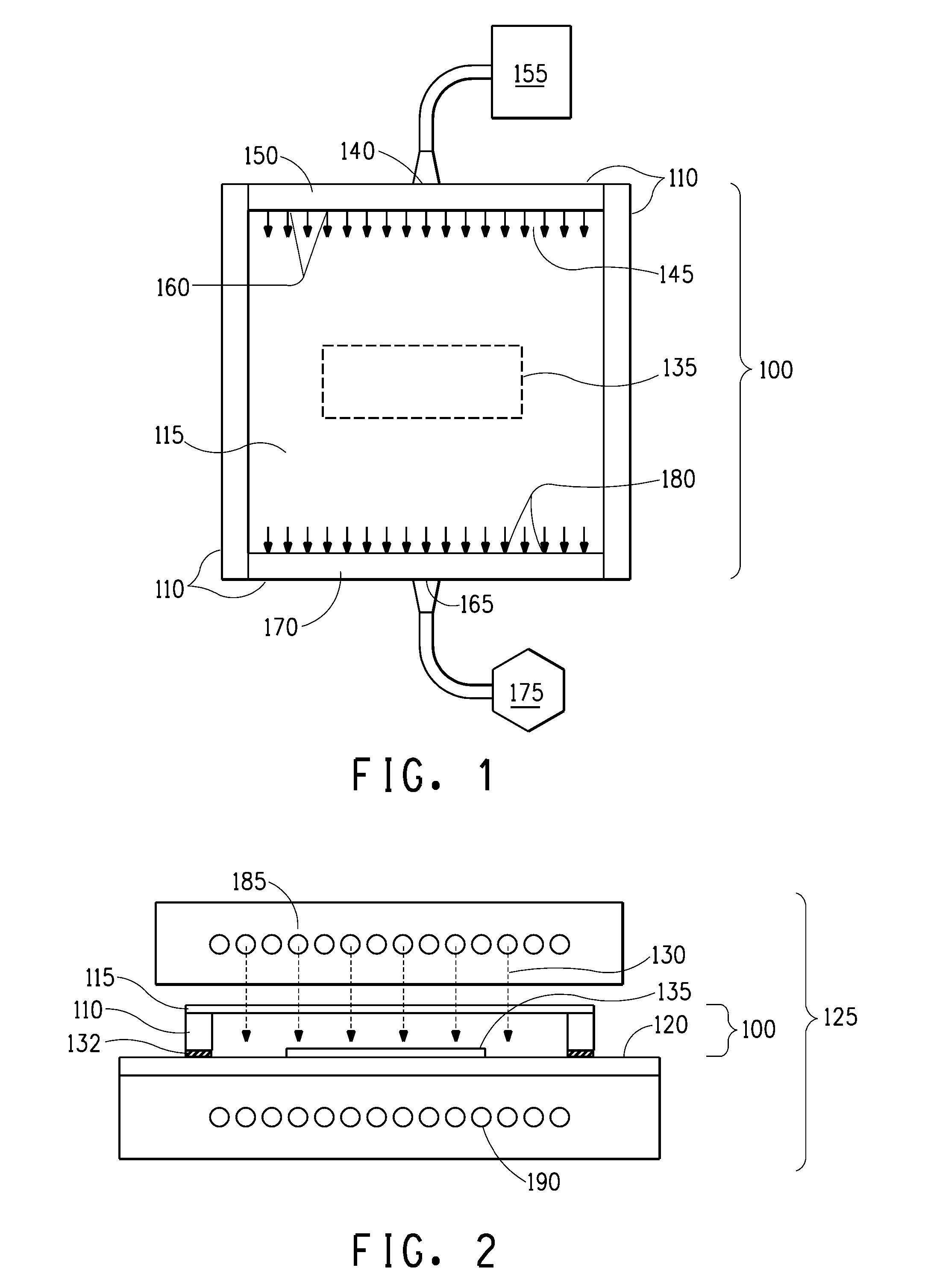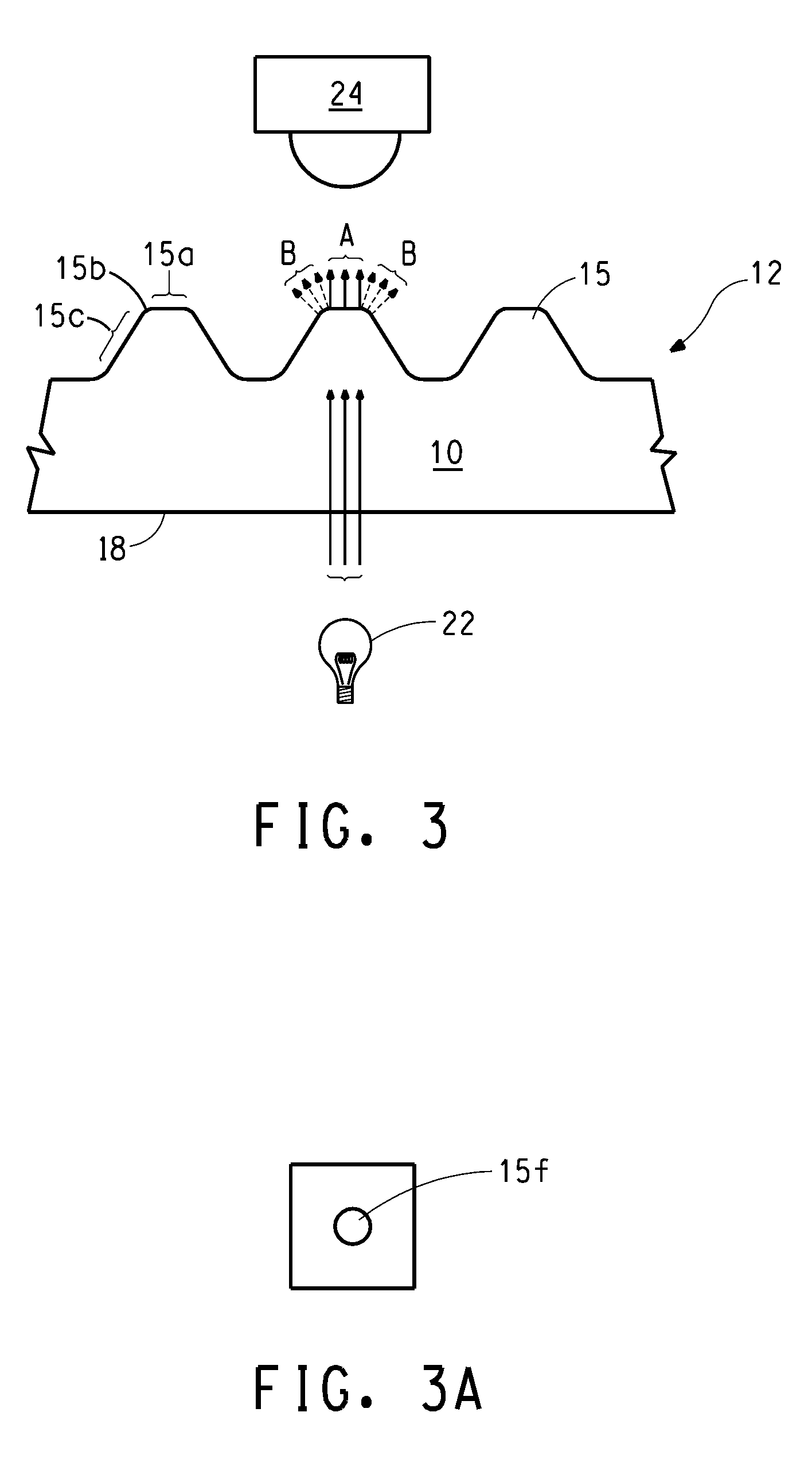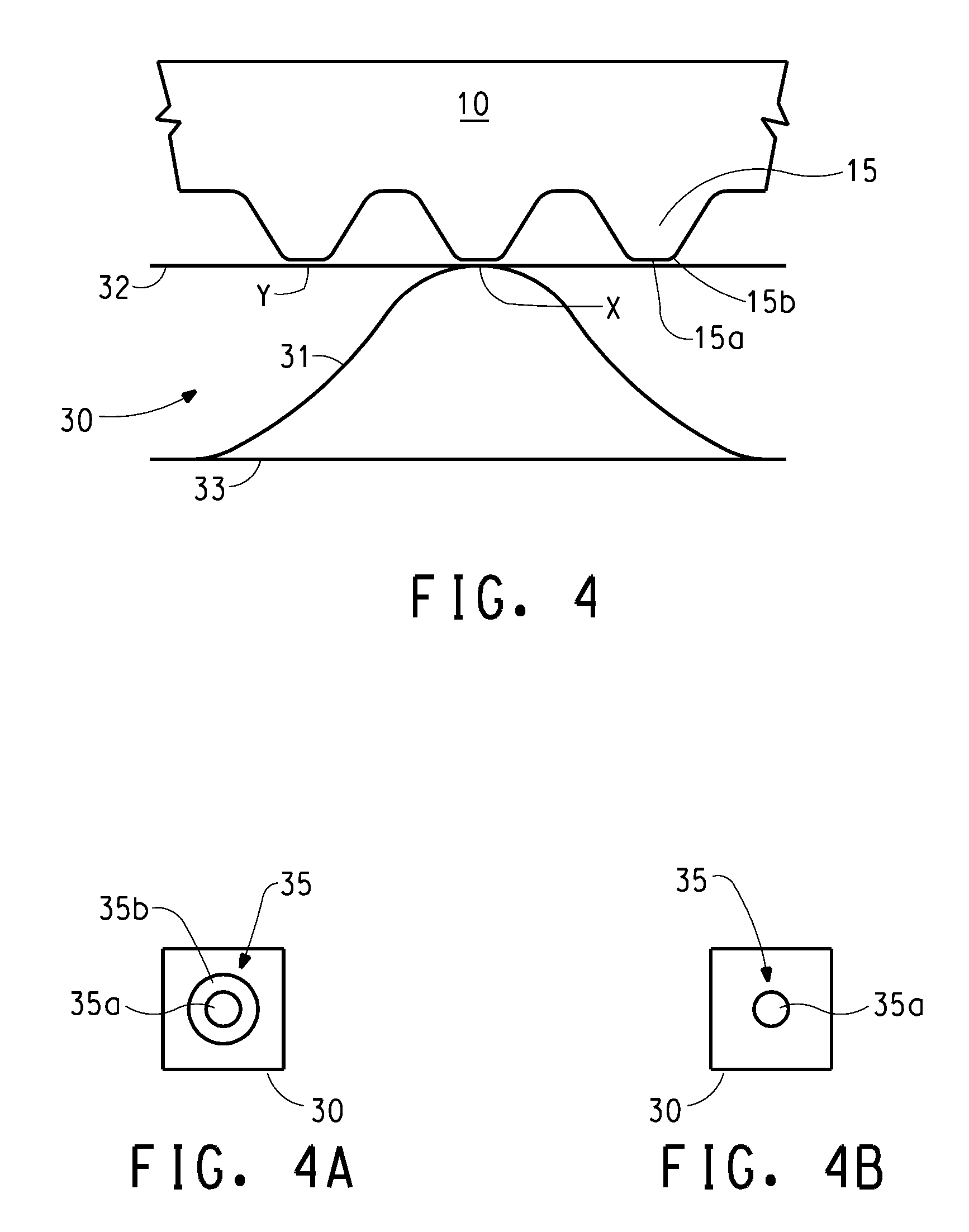Device and method for preparing relief printing form
a relief printing and device technology, applied in the direction of instruments, photosensitive materials, optical radiation measurement, etc., can solve the problems of multicolor image mis-registration during printing, lack of intimate contact between phototool and plate, image artifacts,
- Summary
- Abstract
- Description
- Claims
- Application Information
AI Technical Summary
Problems solved by technology
Method used
Image
Examples
example 1
[0137]All plates tested were CYREL® photopolymerizable printing elements having total thickness of 125 mils (3.175 mm) (which includes the thickness of the photopolymerizable layer and the support) that are suitable for use as a flexographic printing plate. The photopolymerizable printing element included a layer of a photopolymerizable composition comprising elastomeric binder, at least one monomer, and photoinitiator between a support of Mylar® (5 mils) and a coversheet (7 mils). For analog plates, the coversheet included a release layer of polyamide, which was adjacent the photopolymerizable layer. For digital plates, the coversheet included an infrared-sensitive, actinic radiation opaque layer composed of 33% carbon black and 67% polyamide (by weight), which was adjacent the photopolymerizable layer.
[0138]Each element was backflash exposed to UV light (365 nm) for 85 seconds (17.6 mjoules / cm2 / sec) on a CYREL® exposure unit to form a floor. After imagewise exposure, each element ...
example 2
[0161]Modified digital workflow process described for Plate C in Example 1 was used for Example 2 with the following exceptions. Two oxygen meters were used; an Alpha Omega Series 2000, and Alpha Omega Series 3000, each measuring a different range of oxygen concentration. Several plates were prepared, i.e., exposed in the modified ECLF exposure unit, under different conditions, wherein exposure to actinic radiation was initiated when the oxygen concentration in the closed exposure chamber (as shown in FIGS. 1 and 2) reached 190,000 ppm; 150,000 ppm; 100,000 ppm; 20,000 ppm; and 10,000 ppm. The chamber continued to be purged of oxygen during exposure. Oxygen concentration was recorded every minute during the purging and exposure of the photosensitive element to actinic radiation.
[0162]Table 5 shows the oxygen concentration in the closed exposure chamber when the actinic radiation was initiated and the microscopic observation (Hirox 3D) of the wire frame images of the plates at the di...
example 3
[0165]Two photosensitive elements having a IR laser radiation sensitive layer (i.e., digital plates), CYREL® photopolymer printing elements type DPC-155, were imaged on an Esko Spark plate-setter with identical patterns to form an in-situ mask having regions of dots representing a range of dot areas including 2%, 10% and 30% of the area coverage. One plate was exposed to ultraviolet radiation using the standard, conventional digital workflow and processed as described above for Example 1, Plate B. The second plate was exposed to ultraviolet radiation using the modified (inert environment) workflow by placing the plate in a modified ECLF exposure unit. The modified ECLF exposure unit included a chamber consisting of a roof and four walls constructed of Lexan that resided on the bed of the exposure unit. The chamber was sealed from the external environment by applying tape along a perimeter of the chamber where the wall contacted the bed, and purged of atmospheric air by providing a c...
PUM
| Property | Measurement | Unit |
|---|---|---|
| diameter | aaaaa | aaaaa |
| diameter | aaaaa | aaaaa |
| transparent | aaaaa | aaaaa |
Abstract
Description
Claims
Application Information
 Login to View More
Login to View More - R&D
- Intellectual Property
- Life Sciences
- Materials
- Tech Scout
- Unparalleled Data Quality
- Higher Quality Content
- 60% Fewer Hallucinations
Browse by: Latest US Patents, China's latest patents, Technical Efficacy Thesaurus, Application Domain, Technology Topic, Popular Technical Reports.
© 2025 PatSnap. All rights reserved.Legal|Privacy policy|Modern Slavery Act Transparency Statement|Sitemap|About US| Contact US: help@patsnap.com



